Keynote Speakers
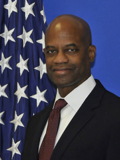
Edward Bolton
Assistant Administrator for NextGen, FAA
Tuesday, Day 1 Conference Keynote Speaker
Edward L. Bolton Jr. is the assistant administrator for NextGen at the FAA. The Office of NextGen (ONG) is responsible for leading the transformation of the national airspace system (NAS). Bolton leads a federal workforce of more than 900 employees, and manages the $1 billion annual budget of the Next Generation Air Transportation System (NGATS). Bolton joined the FAA in September 2013 after a career with the U.S. Air Force, most recently with the rank of Major General and the position of deputy assistant secretary for budget in the Office of the Assistant Secretary for Financial Management and Comptroller. He led a team of financial managers responsible for the Air Force’s $110 billion annual budget. He served as commander of the 45th Space Wing and director of the Eastern Range at Patrick Air Force Base in Florida, where he oversaw a $5 billion budget and 24 successful spacelift, shuttle, test and range missions.

Nancy J. Graham
Director, Air Navigation Bureau
International Civil Aviation Organization (ICAO), United Nations
Tuesday, Day 1 Plenary Keynote Speaker
Nancy Graham joined the International Civil Aviation Organization (ICAO) in 2007 as the director of the Air Navigation Bureau. ICAO is the United Nations specialized agency mandated to establish and maintain the international standards for safe, efficient and economical international air transport. She led the Air Navigation Bureau through a major transformation, broadening its scope to include the full spectrum of safety and efficiency programs. Nancy is a strong believer in partnership with aviation’s international organizations and works to foster joint activities to improve aviation safety and efficiency. Her personal motto is “more logos, less meetings,” in other words, results-oriented partnerships with all parts of the aviation system. Prior to joining ICAO, Nancy was an executive with the FAA, serving in a variety of capacities around the world including Asia Pacific, Europe, the Middle East and Africa.
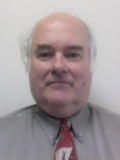
Michael Harrison
Tuesday, Day 1, Evening Exhibitor Welcome Keynote Speaker
Mike J. Harrison is an aviation evangelist associated with Aviation Management Associates in Alexandria, Virginia. He has over 43 years of aviation experience, 35 with the U.S. Air Force and the FAA in various capacities from being a pilot, aviation safety, capacity development, research and development of operational concepts ranging from airports to space. From 2005 to 2010 he served as the editor of The Journal of Air Traffic Control. While with the FAA, he was the director of architecture and systems engineering until his retirement in 2002. For the last 9 years, he has worked to advance the details on the Next Generation Air Transportation System (NGATS) and its European counterpart efforts to change how air traffic management is provided. He holds a bachelor’s and master’s degree in biology from Oregon State University and advanced studies from American University.
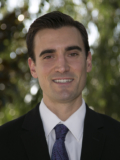
Brandon Suarez
Engineer, Aircraft Systems Group
General Atomics Aeronautical Systems, Inc.
Wednesday, Day 2 Plenary Keynote Speaker
Brandon Suarez currently serves as an engineer for the Aircraft Systems Group of General Atomics Aeronautical Systems, Inc., where he leads the company’s sense and avoid (SAA) efforts, including system development, aircraft integration, and flight testing. The Aircraft Systems Group manufactures supports and operates a variety of proven, reliable, remotely piloted aircraft systems for military and commercial applications worldwide. In his current role, Mr. Suarez leads a collaborative team of experts from the FAA, NASA, and several industry partners to bring together the technology needed for a proof-of-concept SAA system on a Predator B UAS. He also is involved in the development of national and international SAA standards through the RTCA Special Committee (SC-228) and other community forums. The goal of these efforts is to write the standards that will be used to certify the unique features of unmanned aircraft systems (UAS) for flight in the U.S. national airspace system (NAS). Prior to joining GA-ASI in 2011, Suarez worked for Aurora Flight Sciences developing unconventional man-packable UAS, some of which are being tested now in combat.
Plenary Panel Chairs
Tuesday, Day 1
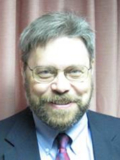
Steve Bradford
Steve Bradford is chief scientist for architecture and NextGen development in the FAA’s NextGen Office. In this role he has participated in the development of the Joint Planning and Development Office’s (JPDO) NextGen concept, the RTCA NAS operational concept and the ICAO ATMCP Global Concept. He is the chairman of the Technical Review Board which monitors technical decisions related investments and the enterprise architecture. He also works with elements of the FAA and the JPDO to develop midterm plans and five year budget requests to implement NextGen. He has a leading role in several new activities with SESAR Joint Undertaking (SJU) and has led several cooperative international efforts via action plans with EUROCONTROL. Previous activities include leading efforts to validate future concepts and developing the FAA’s NAS enterprise architecture.

Michael Standar
Michael Standar is the chief strategies and external relations at the SESAR Joint Undertaking (SJU) based in Brussels, Belgium. He became chief of air traffic management in July 2011 and was promoted to his current position in January 2012. He was an active Swedish member of ICAO Air Traffic Management Operational Concepts Panel (ATMCP ), developing the ICAO Global ATM Operational Concept Document, which continued into the Air Traffic Management Requirements and Performance Panel (ATMRPP). In the early 1990s, he was offered a post at the Swedish CAA headquarters, later the LFV ANS Service provider. There, he was promoted first to head units for ATM operational developments and operational support and later head of the business area of LFV’s ATM support and development before taking up duties as LFV director for ANS business development.
Wednesday, Day 2
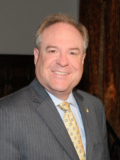
Jim Williams
Jim Williams is program executive, UAS Integration Office, at the FAA. He was selected in March of 2012 to lead the newly formed Unmanned Aircraft Systems (UAS) Integration Office. The new office combines the formerly independent efforts of the Air Traffic Organization and the Aviation Safety Organization. He is responsible for coordinating all aspects of the FAA’s efforts to integrate UAS into the national airspace system (NAS). This includes activities for rule making, standards, guidance material, industry coordination, interagency coordination, research and development, and planning to support UAS integration. Mr. Williams was the director of engineering services from 2005 to 2012. In this position he was responsible for the National Airspace System (NAS) Enterprise Architecture, the interface standards and requirements for all NAS equipment, the Information Systems Security Architecture, and the NAS level Safety Architecture.
Thursday, Day 3
Aloke Roy

Mr. Aloke Roy is a senior program manager with Honeywell Advanced Technology. He currently manages data communication, information security and radio technology development programs supporting Honeywell Aerospace. Previously, Mr. Roy was director of programs at Flextronics Corporation managing several major telecommunications OEM accounts. In this role, Mr. Roy was responsible for business development, outsourcing, and globalization of hardware design activities supporting large volume contract electronic manufacturing. His prior experiences include various positions at AT&T Bell Laboratories and ARINC Aviation Systems Division. As Systems Engineering Director at ARINC, Mr. Roy oversaw development of SATCOM, HF, VDL, ATIS, and PDC standards and services. Currently, Mr. Roy chairs ICAO ACP Working Group “S” and RTCA Special Committee 223, which are developing the Aeronautical Mobile Airport Communication System requirements and operational performance standards. Mr. Roy holds several patents on aeronautical, wireless and secure communications.
ICNS Conference General Chairs
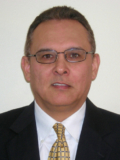
Rafael Apaza
Conference General Chair
Rafael Apaza is a senior communications research engineer for the NASA Glenn Research Center in Cleveland, Ohio. He has over 25 years of project management and technology development for the national airspace system (NAS). Rafael works in research and development of aeronautical communication technologies and the experimental development of advanced communications systems utilizing modeling and simulation. His responsibilities include management of the NASA Cleveland CNS test bed, NAS data communications modeling and simulation, AeroMACS technology development and unmanned aircraft systems (UAS) modeling and simulation lead. Rafael worked for the Federal Aviation Administration in field engineering, NAS planning and research and technology development from 1987-2011. He holds both a Bachelor of Science and Master of Science in electrical engineering from Wayne State University, Detroit, and holds a Master of Science in computer and information science from University of Michigan.

Lance Sherry
Technical Chair
Lance Sherry is associate professor of systems engineering and operations research at George Mason University. Dr. Sherry also serves as the director of the Center for Air Transportation Systems Research at George Mason University. Dr. Sherry has over 30 years experience in the aviation industry serving as a flight-test engineer, flight control engineer, system engineer, lead system architect, program manager, strategic planning and business development. Dr. Sherry served as a fellow at RAND Corporation 1999-2001. He has published over 100 papers and journal articles, holds several patents, and has received awards for his work. Dr. Sherry is a graduate of Brown University with a Bachelor of Science in electrical engineering, and he holds both a Master of Science and a doctorate in industrial and system engineering from Arizona State University.

